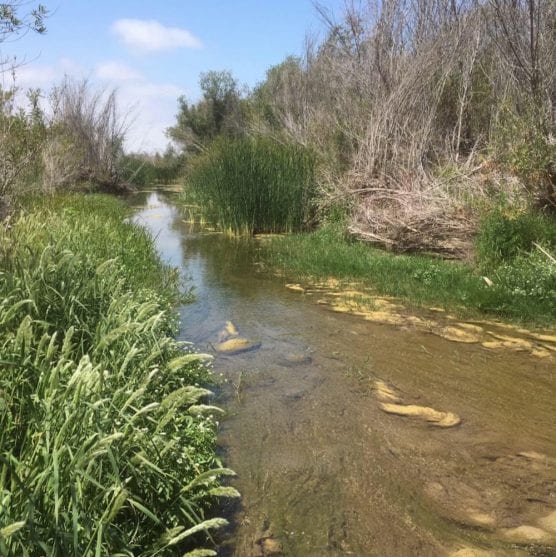The SCV Water Board of Directors at its meeting Tuesday night affirmed its commitment to protect and preserve the Upper Santa Clara Valley watershed through the adoption of seven stewardship objectives.
“The Santa Clarita Valley shares one river and one watershed. As a regional water agency, it’s more important than ever to make an affirmative statement of our responsibility of this critical resource,” said Bill Cooper, board president for SCV Water.
“The action acknowledges our role as the regional policy-making body on matters of our water supply and our intent and desire to partner with organizations that share common goals,” said Cooper.
In November, SCV Water staff and directors partnered with TreePeople in a restoration effort in San Francisquito Canyon. About 20 agency employees volunteered for a half-day of planting to help restore a creek-side habitat area.
Then in January this year, a small group from SCV Water visited a city of Santa Clarita project site in the river bed, learning first-hand the difficult process to remove Arundo, an invasive plant species in the reed family.
“One of the benefits of the creation of SCV Water last year was that our agency can speak and act as one entity,” explained Matt Stone, general manager. “We plan to engage with stakeholders within our watershed, and plan and discuss policies and projects to achieve tangible progress towards the objectives.”
The resolution contained the following seven objectives:
1. Work cooperatively with governmental agencies, non-governmental groups and other stakeholders, to develop and implement sustainable efforts for the long term health of the Santa Clara River.
2. Pursue and support public ownership of property along the Santa Clara River.
3. Preserve and protect parcels for water conservation and recharge.
4. Promote appreciation and enjoyment of the River through signage, mini-parks, respite areas and shade.
5. Seek options for the removal of invasive plant species from the River (including Arundo and Tamarisk); and prevention of their return.
6. Devise, promote and partner in conservation projects.
7. Manage the river to protect and ensure the sustainability of groundwater resources.
The Santa Clara River is one of the last free-flowing, natural riparian systems remaining in Southern California. The Santa Clara River Watershed is approximately 1,634 square miles and travels through both Los Angeles and Ventura counties.
Though surface flow is intermittent through much of the approximately 18 miles within the SCV Water service area, the river is home to many species of flora and fauna along its 83-mile length, including rare, very rare and protected species.
Like this:
Like Loading...
Related





 Tweet This
Tweet This Facebook
Facebook Digg This
Digg This Bookmark
Bookmark Stumble
Stumble RSS
RSS


























REAL NAMES ONLY: All posters must use their real individual or business name. This applies equally to Twitter account holders who use a nickname.
4 Comments
How can the public find out about volunteering and educate ourselves about this resource?
Great news. A wonderful river system to protect, beautiful now that is flowing from the rains. Unfortunately a lot of rattlers around that riparian area.
Yes, its the last mostly wild river in Los Angeles County. And this is nice talk, but let’s see if the agency will really “walk the walk”, stop over-pumping the river (stewardship -#7). SCOPE (Santa Clarita Organization for Planning and the Environment) already got signs for the river on all the bridges (they are the blue ones that say “Santa Clara River”), but it might be nice to have more signs on the bike paths.
Oh really? The sudden discovery of water wasting and dangerous to native plants of Arundo Donax and Tamarisk, the scourges of the west for the last hundred+ years?
Those plants have been ignored for many years because they weren’t the problem of upstream water users; only those downstream. We’re in a tizzy over the expensive chloride dumping here in SClarita, and now we’re going to fix those nasty plants from Agua Dulce all the way to the Newhall Land and Framing properties ending at the Ventura County Line?
Who is going to pay for that?
One guess folks: It ain’t going to be the developers.
Its going to be Us.